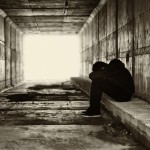There are several different types of depressive disorders, though all share many of the same symptoms. Some are more severe and long lasting. Some people may have only one depressive episode in their lives, while others may have recurring or constant depression unless they are successfully treated. The main types of depressive disorder are:
Major Depressive Disorder
Approximately About 15 million American adults—about 7 percent of the population—will experience major depression each year. It is the leading cause of disability in the United States among people aged ages 15 to 44.
Major depression is marked by persistent sadness, feelings of guilt and worthlessness, trouble concentrating, sleep and appetite problems and lack of interest in the things a person used to find pleasurable. To be classified as suffering a major depression, a person must have several symptoms and they must occur on most days for at least two weeks.
While major depressive disorder can manifest at any age, the average age of onset is 32, and the disorder is more common in women than men, though some researchers think that at least some of the difference may be attributed to cultural norms that influence whether a person seeks help for personal problems. To view the symptoms of major depressive disorder, click here.
Bipolar Disorder
Bipolar disorder may have some or all of the same symptoms of major depression, during a depressive period. People with bipolar usually, though not always, have at least some degree of mania, almost always preceding a depressive episode. Mania can include risk-taking, increased energy and activity, euphoria, and paranoia. In recent years, researchers have discovered that some people who have only depressive episodes, and not mania, may also suffer from bipolar disorder. About 6 million people have bipolar disorder, and the average age that it first occurs is 25.
Dysthymia
Rather than coming and going in episodes, like major depression, dysthymia is chronic and often unrelenting—sometimes for years. Symptoms of dysthymia are the same as for major depression. Researchers estimate that about 3.3 million people experience dysthymia.
Postpartum Depression
Postpartum depression is a type of depression that occurs soon after a woman has a baby, usually within the first four weeks after giving birth. Though many women can have patches of feeling low after giving birth to a child, postpartum depression is more severe and long lasting. The symptoms are the same as for major depression. Women who have experienced a mood disorder before becoming pregnant are at increased risk for postpartum depression.
Seasonal Affective Disorder (SAD)
People with SAD usually experience depression at the same time every year, often during what is winter in whatever hemisphere a person lives, when the days are shorter. Symptoms of SAD occur more often in women than men, and usually start occurring at a younger age than major depression. The symptoms of SAD are very similar to the symptoms of major depression.
Special Note: Suicide
One of the most serious symptoms of depression is suicidal thoughts and the desire to take one’s own life. People who are suicidal often feel no way out of their current circumstances, that nothing will ever change for the better, and that the world may be a better place without them. If you or someone you love is feeling this way it should be taken very seriously, and help should be sought immediately. A good first step can be calling one of the national suicide hotlines at all 1-.800-.SUICIDE (1-.800-.784-.2433) or 1-.800-.273-.TALK (1-.800-.273-.8255).
Last Reviewed: June 14, 2010








